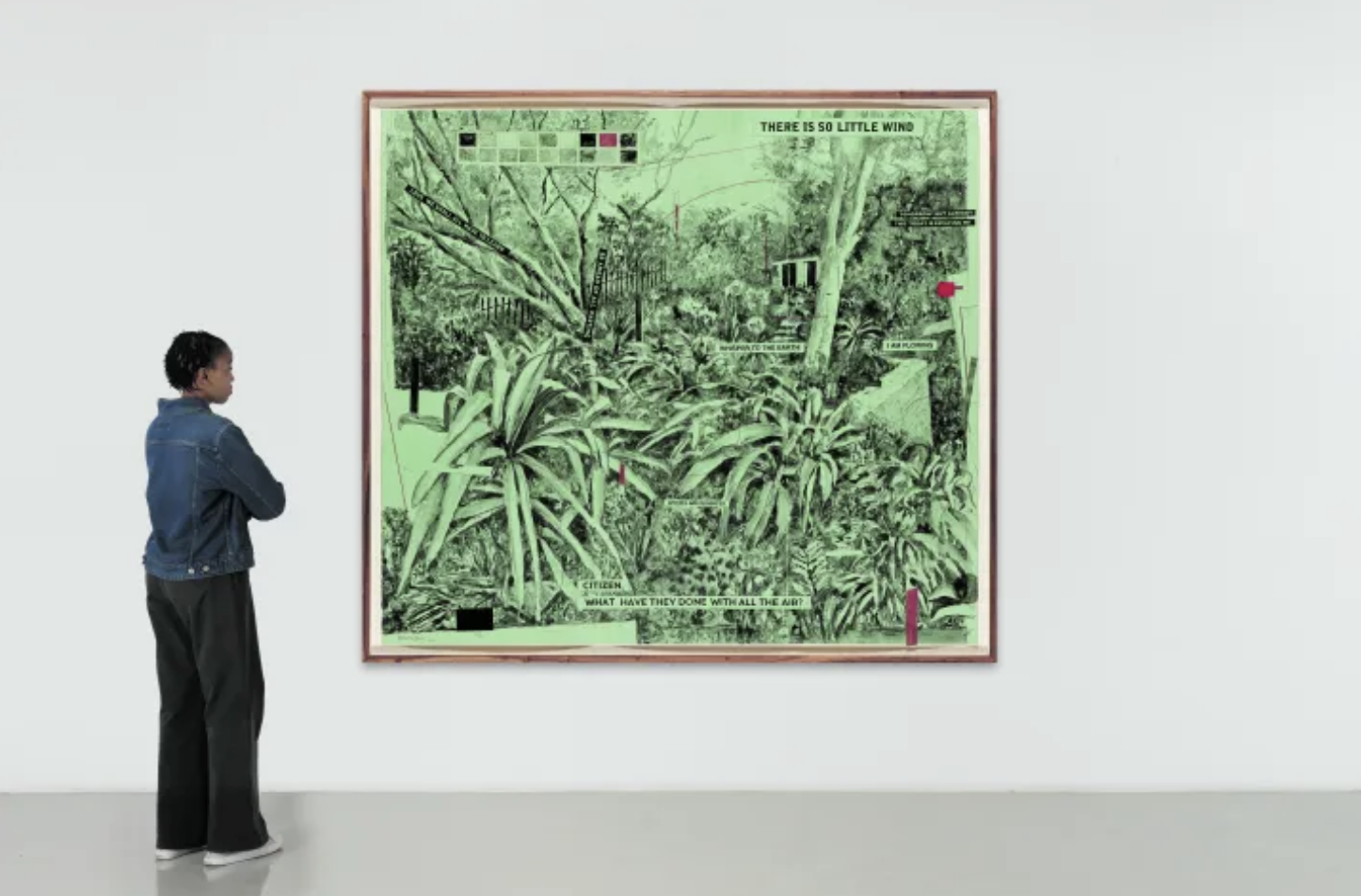Although focused on politics, colonialism and the unreliability of historical narrative, particularly in relation to his native country, Kentridge's art is never heavy-handed or sloganeering: instead, it approaches these weighty subjects in "unexpected, culturally curious ways". His distinctive "fluidity" and playfulness are present and correct at this new exhibition, which foregrounds his less-well-known work as a sculptor. Bringing together more than 40 sculptures and films created between 2007 and the present, it takes place both indoors and outside, with "bold, sculptural works", some monumental in scale, spread out across the "lush acres" of the Yorkshire Sculpture Park in a celebration of "form and scale".
Read MoreNEWS
Kentridge’s explorations of the human self can result in multiple insights, and contradictions. Often in his video series multiple Kentridges or doppelgängers argue and disagree on ideas, methods and even memories. (These videos are influenced by his engagement with the world of theater, and at the Hauser & Wirth show they are displayed in a corner of the gallery emulating his studio.) Because the artist draws mostly with charcoal, the notions of erasure, overwriting and haziness in the paintings are heightened, making it plausible to debate and even dispute everything.
Read MoreThis new artist’s book from Hauser & Wirth Publishers is a translation into book form of South African artist William Kentridge’s film series Self-Portrait as a Coffee-Pot, which premiered at the Arsenale Institute for Politics of Representation in Venice, during the 2024 Venice Biennale. In the nine-episode series, Kentridge employs a multidisciplinary approach—combining film with performance, collage, drawing, and music—to investigate the relationship between thinking and artistic creation and is a reflection on what might happen in the studio—and in the brain—of an artist today.
Read MoreThis month, audiences in South Korea will once again encounter the haunting, layered world of the South African artist known for collapsing the boundaries between drawing, film, music and performance. William Kentridge, whose diverse works have previously been showcased at the National Museum of Modern and Contemporary Art, Korea, the Asia Culture Center and the Amorepacific Museum of Art, returns to Seoul with two of his recent works under the GS Arts Center’s Artists series: "Sibyl," and multimedia symphonic project “Shostakovich 10: Oh To Believe in Another World” (2024).
Read MoreThe 20th century is a cruel farce performed by puppets in a cardboard museum in South African artist William Kentridge’s grotesquely funny, constantly disconcerting film interpretation of Shostakovich’s 10th Symphony. Lenin and Stalin, their faces’ photographs fixed on jerky figures made from scraps, transforming sporadically into living dancers hidden under collaged costumes, monstrously dominate a puppet cast that also includes the bullish-looking but revolutionary poet Vladimir Mayakovsky along with Trotsky and Shostakovich himself.
Read MoreWilliam Kentridge’s solo exhibition, To Cross One More Sea, was a multimedia showcase displayed at the Goodman Gallery, Johannesburg, with drawings, puppets, prints, sculpture and a three-channel film. The 19-minute projection explored a part-historical, part-fictional ocean journey of artists, particularly surrealists, who fled Vichy France in the early 1940s.
Read MoreMore sweetly play the dance (2015) by the South African artist William Kentridge (born Johannesburg, 1955) is a work that combines video, animation, drawing, music and performance to create an immersive and multidimensional experience. It is a notable example of how Kentridge explores themes of history, politics, memory and identity, using a visual language that mixes the ephemeral with the permanent and the tragic with the optimistic.
Read MoreFor 90 minutes, The Great Yes, The Great No explores themes of exile, resistance and the complex dynamics of colonialism through surrealist imagery and performance elements. The libretto draws inspiration primarily from Césaire’s book-length poem, “Cahier d’un retour au pays natal,” or “Notebook of a return to my native land.” The all-female chorus performs music in eight different languages of South Africa.
Read MoreThe William Kentridge and Handspring Puppet Company’s masterpiece, Faustus in Africa comes to The Baxter, 30 years after its phenomenal success. Thirty years after its premiere and following on from its resounding success, William Kentridge and Handspring Puppet Company re-unite to present Faustus in Africa! at The Baxter from 26 February to 22 March 2025.
Read MoreOn Wednesday February 12, 2025, William Kentridge was officially installed as a foreign associate member of the Académie des beaux-arts by fellow member Erik Desmazières, member of the engraving and drawing section, under the Dome of the Palais de l'Institut de France. He was elected on Wednesday, September 15, 2021, to the seat previously occupied by Greek goldsmith and jeweler Ilias Lalaounis (1920-2013). At the end of the ceremony, which concluded with "La Couleur Oui", a film created by William Kentridge for his installation, Catherine Meurisse presented him with his academician's sword.
Read MoreThere are everyday chamber operas, and then there are the works conceived and directed by South African artist William Kentridge. Kentridge’s "The Great Yes, The Great No", which is being presented Feb. 5–8 at the Wallis Annenberg Center for the Performing Arts in Beverly Hills and March 14–16 at Cal Performances in Berkeley, is an opera that is also part play, with a Greek chorus thrown in for good measure. Based on actual events, the work involves a who’s who of mid-20th-century thinkers, including French surrealist André Breton, French anthropologist Claude Lévi-Strauss, and Cuban artist Wifredo Lam, depicting their historic escape from Vichy France on a cargo ship sailing from Marseille to Martinique.
Read MoreWilliam Kentridge is internationally recognised for his drawings, films, and theatre and opera productions. His method combines drawing, writing, film, performance, music and theatre to create works of art based on politics, science, literature and history while maintaining a space for contradiction and uncertainty. (...) William Kentridge: "More Sweetly Play the Dance" installation which is part of the collection of Fundació Sorigué, will be shown at the Museo Picasso Málaga as an Invited Work from 21 November to 27 April next year.
Read More











